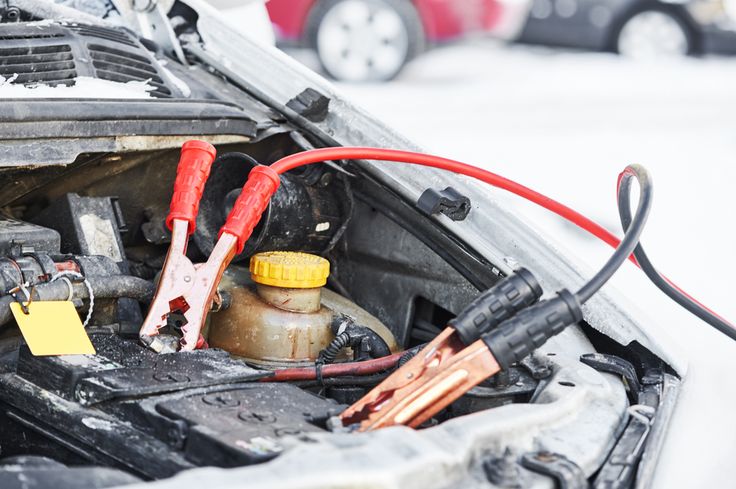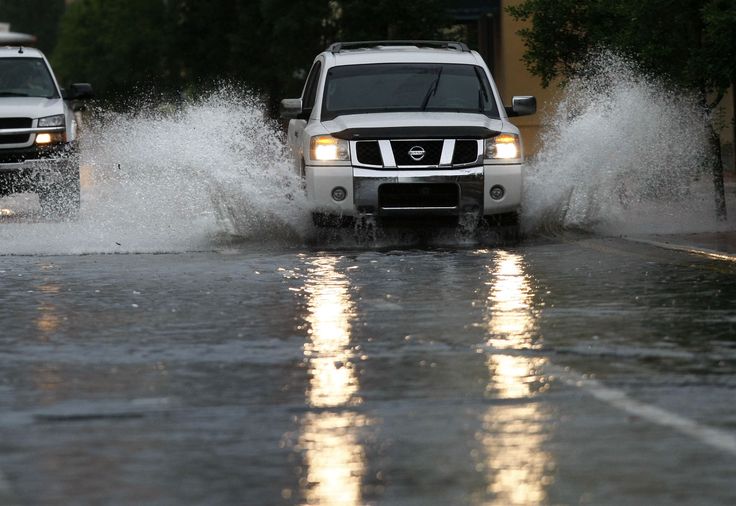Driving your car in the rain is like a nightmare but it’s even worse when you are stuck in the mid-road with a dead battery so the question is “Is it safe to jump a car in the rain?”
Conventional wisdom is that it is very dangerous when water and electricity come into contact with each other so many drivers are concerned that jumping a car in the rain will damage the electrical components and may even be a risk. What’s the truth?

Contents
Is It Safe To Jump A Car In The Rain?
Jump start a car like a lifesaver when your battery is out of power but whether the pouring rain can prevent you from making this process or not? This question attracted many concerns from the drivers. Don’t worry! Let us make it clear in this article:
“You can jump-start a car into the rain if you make the process with the right precautions” this is our answer but why? As we know the electrical system in the car usually has a very low voltage of about 12 volts, so it will limit the risk of electric shock. Therefore, starting a car in the rain may be safe and less likely to cause danger to the driver. It can be said that repairing or doing anything related to electrical equipment in rain or wet conditions also poses a danger to the repairer. However, in case you have to jump your car into the rain, it can’t harm you.
Human resistance can go up to 10000 ohms whereas the max current from a 12-volt battery is 0.012 amps or 12 milliamps; it’s too low to cause it to be electrocuted. However, you also should note that not just because there are not any serious risks doesn’t mean it doesn’t cause any potential danger, please remember that water is a very good conductor of electricity. To make sure safety, let’s follow some steps below:
>> Read more: How To Jumpstart A Car Without Another Car?
Safety Precautions Before Jumpstarting Your Car Into The Rain
The common beliefs could probably make us fear when jump-starting a car under the rain. You don’t need to be afraid, when making this process, you should notice the tips to ensure the safety of yourself and the vehicle:
- Check the cable condition to make sure the insulation is working properly. This work is extremely important because when water seeps into the damaged cable, it will cause a short circuit.
- Make sure raindrops do not penetrate the battery terminals and inspect your battery to ensure that it’s not frizzy before starting to jump your car.
- Also, when trying to jump the battery, keep it as dry as possible. Even though you have the least amount of risk, the delicate electronics in the engine area still don’t work well with water. Using the umbrella if you have one.
- Always wearing rain gear and a rubber glove to protect you from electrical shock. In addition, you should equip additional eye protection to wear when you have to come into contact with explosive or dangerous corrosive materials.
- Connect the red lead to the positive terminal of the battery, marked with a (+) and with a red cap. It should be noted that the red wire must not touch the ground or touch the body of the vehicle because it is very dangerous. Generally, please don’t let the cables touch together or any metal surface except for your engine and the battery.
- When jump-starting a car, always remember to be sure not to let your body touch the car because it can accidentally become an electrical bridge between the two vehicles, and the current can be passed through the person, endangering life.
- You should note that the terminals always clean, and remove rust, thereby ensuring electrical conductivity. You can use a dry cloth to clean the 2 terminals of the battery charger.
How To Properly Jumpstart Your Car In The Rain?

Although car batteries are only 12 volts DC, that does not mean that jumping into a car is not without risks like eye injuries or damage to your car. Jumpstarting your car in the rain can be safe and manageable as long as you follow the right steps. Except for some precautions such as those mentioned above, we want to emphasize that performing these operations is the same as jumpstarting under normal weather.
Step 1: Make your car ready
Just like the normal jumpstarting process, the first step you will have to disconnect all electrical equipment on the car such as the radio, air conditioning system, and lights… please switch to automatic off mode so that the sensors do not work to reduce battery power consumption as much as possible.
Note: When jumpstarting your car into the rain, you should not open the hood too soon, keep the hood closed until you find another car to start the jumping process. Because if the water or moisture penetrates too much into the engine compartment, it will be dangerous to the car’s components and the car’s starting process. You can use covers or waterproof items on the hood to keep the parts under the hood from getting wet
Step 2: Park the vehicles
Parking positions must be safe, with warning signals turned on or using warning devices to ensure safety. You should park 2 cars as close together as possible to ensure that the cables’ ends can reach each other, but keep a short distance between the two vehicles so that they do not touch each other and cause potential hazards.
Step 3: Connect the cables
Before connecting the ends of the cable to the car battery, dry the battery and the clamps because wet batteries can conduct too much electricity, causing danger to the driver and vehicle. In addition, you need to make sure the battery terminals are always clean, and remove rust, thereby ensuring electrical conductivity.
Connect the red clamp of the jumper cable to the positive (+) pole on the flat battery. And the other end of the red cable to the positive terminal of the good battery. Use black ends (color to avoid confusion) to connect the negative (-) terminal of the primer battery to any (unpainted) metal components in the engine compartment of the vehicle with the dead battery such as the chassis or shell… Absolutely do not connect to the negative (-) terminal of a dead battery, this may cause ignition and cause a fire.
Step 4: Start and test your car
You will then start the support vehicle to supply power to the vehicle with the dead battery. Start the car with a good battery to start the engine for 3-5 minutes, then start the car with a dead battery. Let both cars run for about 3 minutes before removing the cables. If your car does not start, try to wait a few more minutes and then continue to start the engine again until the car starts again. In case the car still won’t start, you can contact the tow service for the timely help
Step 5: Disconnect the cables
If your vehicle is operating normally as planned, in this last step you will proceed to remove the cable in the reverse order of connection (remove the negative terminal first, then the positive one). After the vehicle is operating stably again, you should go to the nearest reputable car care center to check and fix it in time. In addition, to limit this problem of battery death in the middle of this road, you should pay attention to regularly check the car battery, and replacing it at the right time or when you detect strange signs.
Related post: Why Don’t You Connect The Negative When Jumping A Car?
Some Possible Risks Of Jumping Your Car In The Rain
Can you jump a car in the rain? Yes, positive. You need to note that the car’s electrical system is 12 volts, not 110 or 240 like the house wiring so it will be safe to do the starting process in the rain. However, there will still be some potential risks in this process no matter what weather conditions you do it.
According to experts, making mistakes when performing jumpstarting can sometimes have serious consequences. Can lead to a fire in the car’s computer system and even more dangerous can cause the battery to explode leading to serious injury or death as we know the acid in the car battery can be especially dangerous to skin burns or blindness. The next risk you can take to the rescue vehicle because you don’t know how the vehicle works and the manual may not be available which could result in damage to the support vehicle. In addition, failure to follow instructions or incorrect technique may result in an electric shock to the person holding the cable or anyone nearby.



